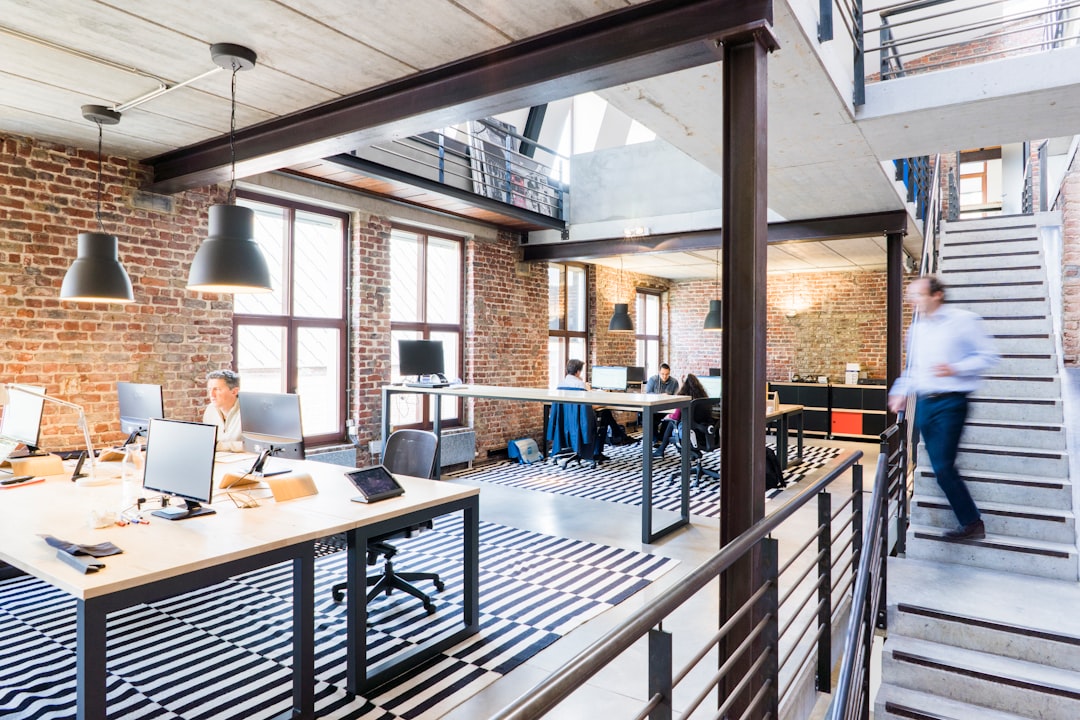No, the Open Space Doesn’t Lead to Innovation
And why it's time to go back to the old-fashioned office.

The open-space office is a phenomenon that began to take off in the 2000s.
Its image as a modern, trendy place to work, reinforced by the culture of American startups that seem to be constantly innovating in these large, open offices, quickly won over even the most conservative.
Today, it’s hard to find an office that doesn’t adopt this design.
Yet, I’ve always had my doubts about the real utility of this configuration.
For those looking to concentrate, open-plan offices are often a nightmare.
And yet, the argument that managers keep repeating seems convincing: Open space facilitates interaction and therefore innovation.
But is this really the case?
I had my doubts, and that’s why I went looking for answers.
The open-space paradox
It didn’t take long for me to find the answer to my intuition, since scientific studies have repeatedly shown that open-plan offices are not suitable for productivity.
A recent study, for example, showed that open space increased bad moods by 25% and stress-related sweating by 34%.
Another study published in 2019 even showed a link between open space and feelings of dehumanization!
A study carried out by the Gensler architecture firm on 6,000 Americans showed that the time spent in coworking spaces - most of which are arranged as open spaces - is inversely proportional to concentration.
Among all these studies, one in particular caught my attention as it directly attacks the main argument for open space: social interaction.
This 2018 study by two Harvard University researchers aimed to analyze the effects of open space on interactions between people, whether face-to-face, via email, or instant messaging.
To do this, they used a sociometric badge, an electronic device worn around the neck that measures physical interactions between people (using infrared sensors, microphones, motion and location sensors).
In two studies carried out in two large American companies, they measured these interactions before and after the office was redesigned as an open space.
Contrary to expectations, the results showed that face-to-face interactions decreased by around 70% in the open-plan office!
Conversely, employees communicated much more by email.
In the first company, participants sent 56% more emails in the 15 days following the move.
The researchers concluded that the transition to open space is not necessarily synonymous with increased interaction.
Why open-space doesn’t work
According to the researchers of the study mentioned above, the fact that open space makes employees “observable” to the rest of the group acts as a barrier to interaction.
By using other communication channels such as email or instant messaging, employees avoid interacting in plain sight, thus reducing physical interactions, even when the recipient is within sight.
Although studies abound, the interaction argument is always used to defend the open workspace.
In reality, this argument hides another that is harder to admit: open space makes it easier for managers to monitor staff.
Yes, trusting someone is always easier when you see them sitting at their desk.
What manager hasn’t been tempted to look over a colleague’s shoulder to see what they’re up to?
This argument may not even be conscious to most managers, but it’s a reason that strongly tips the balance in favor of open space.
Is it a good reason?
I personally prefer to work remotely with my team, offering them total autonomy through asynchronous communication.
For those who still prefer the physical workplace, there are some interesting solutions.
Towards a new model for the workspace
The solution to the open space problem may well lie in the past: the good old partitioned space.
A study published in 2020 shows that when employees have a private space, their productivity increases by 17-22%.
In his book Deep Work, Cal Newport uses the example of the famous Bell Labs to demonstrate the benefits of such a design.
The building - which led to the creation of the transistor, the laser, and photovoltaic cells - encouraged both deep concentration and social interaction.
In addition to having a private space for each researcher, the building was laid out in such a way that each office was connected to a long, seemingly endless corridor.
The trick: to get to the cafeteria, researchers had to walk along this long corridor, interacting along the way with other researchers working on completely different projects.
In a book recounting the history of Bell Labs, Jon Gertner describes this design in this way:
"Traveling the hall’s length without encountering a number of acquaintances, problems, diversions and ideas was almost impossible. A physicist on his way to lunch in the cafeteria was like a magnet rolling past iron filings."
This hybrid model between privatization and shared space meets both the need for concentration and the need to create unexpected interactions.
The return to favor of the partitioned space seems to have already begun among the Tech giants, as can be seen at Meta, which recently decided to reintroduce the cubicle into its offices.
Although remote work has become a given for some, many companies want to bring staff back to their premises.
In this context, it’s interesting to consider the usefulness of open-plan offices, and to look for architectural models better suited to our needs.
The post-pandemic office could benefit from our experience of remote work, and reconcile both private space and areas of social interaction.


